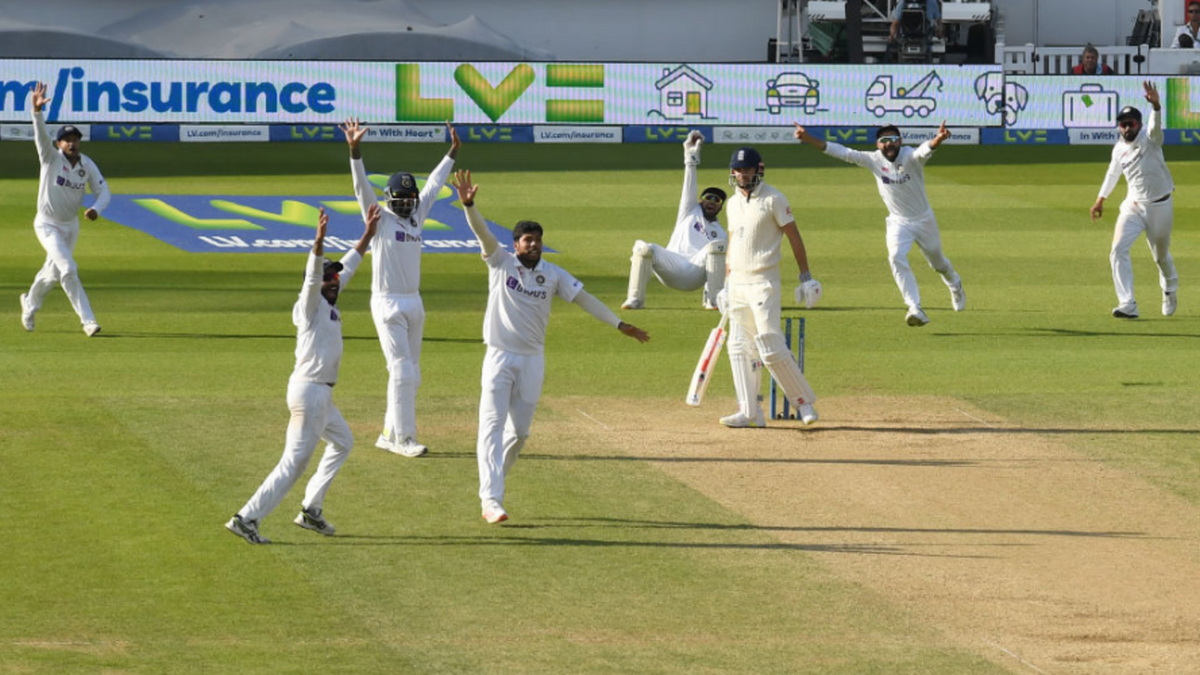
Despite the non-selection of Ravichandran Ashwin being the talking point in the media, India have still managed a 2-1 lead against England. Maybe, Virat Kohli’s India got their team selection right after all, writes Divy Tripathi.
On the fourth day of The Oval Test, time and again, the TV cameras panned towards a stoic Ashwin, who was sitting alone and watching the proceedings. One need not have been Sherlock Holmes or his million pastiches to make a guess as to why this was happening.
After all, Ravichandran Ashwin has the best average (28.11) amongst all the spinners (with a minimum of ten wickets) who have toured the country since 2010. Given the reputation of The Oval pitch, many experts had believed that India would go ahead and play Ashwin.
Discussing the possible Indian team composition for the fourth Test in Daily Mail on August 29, Nasser Hussain had stated, “So the most likely solution is Ashwin will come in for a seamer, most likely Ishant Sharma who struggled at Headingley, and join Ravindra Jadeja in a more balanced looking side with a deeper batting line-up as long as Jadeja recovers from his knee injury.”
This was stated in reference to what Hussain saw as an absence of balance in the Indian team during the third Test. Rishabh Pant was deemed to be batting too high at number six, but this couldn’t be cured in the absence of a fast-bowling all-rounder like Hardik Pandya. However, for the fourth Test at The Oval, Virat Kohli went in with only two changes: bringing in Shardul Thakur and Umesh Yadav for Mohammed Shami and Ishant Sharma respectively.
When asked about the absence of Ashwin at the toss, Virat said, “Well, England has got four left-handers, and you know we thought it’s something that’s a good match-up for Jadeja as well, because mostly all our seamers bowl over the wicket and it’s a nice little spot for the left-handers as well. So, I think according to the match-ups it fits perfectly well for our team. Plus, the balance he is giving us with the bat as well currently is something which is very important.”
Another set of critical enquiries and post-mortems into Kohli’s decision-making were possibly being readied after England got off to a good start in the fourth innings. However, the fourth evening of the Test itself, showed how Virat’s words (and selections) were coming to fruition.
After conceding 24 runs in his first six overs, Jadeja found his rhythm and got into exploiting the rough outside the left-handed batsman’s off stump. Through the rest of the innings, he troubled the English batsmen and played a crucial role in the win.
As witnessed even in the practice game before the Test series, India seemed to have decided on playing a four-man pace attack for the majority of the tour. This was a continuation of their strategy from 2018, where India had fielded three fast bowlers and Hardik Pandya in four of the five Tests of the series.
And, to their credit, the Indian fast bowlers have delivered to the hilt. They’ve been as good if not better than the English bowlers and haven’t let the game slip past them. On the final day at Lord’s, the four pacemen hunted the English line-up in a pack, bowling them out in 51.5 overs. The fourth Test saw special contributions from Shardul Thakur, who got breakthroughs at crucial moments, and Umesh Yadav, who showed his expertise with both the new and old ball, helping India win on the fifth day.
The only failure that India saw in the series came courtesy of a first-innings batting meltdown, where the batsmen were shot out for 78. In all the other instances, the Indian team and its selections have been proved to be right.
The presence of four-fast bowlers has ensured that the team isn’t too far behind the game, even if they end up conceding a hefty lead in the first innings. This was the case at Lord’s as well as The Oval. Besides the selections, Virat also ensured that he used the resources at his disposal to the best possible effect.
While the move to send Jadeja at number five didn’t bear fruits in terms of runs, in the second innings he saw off the second new ball which made things a little bit easier for the likes of Rishabh Pant and Shardul Thakur. This move also allowed Pant to bat at number 7, a call that has several advocates.
These calls see the Indian skipper transition from his early days as a captain overseas, where a number of baffling omissions affected India’s chances away from home. A few years on, Virat Kohli’s India has hardly set a foot wrong in England.
It is due to these decisions that the team will return with their best performance in England since ’07, and Virat Kohli will return as the most successful Indian captain in the country.








